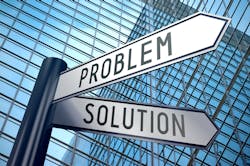It’s early in the year, and I’m looking forward to the rest of 2019 for two reasons. The first is connecting with as many of you as possible, either at trade shows, in person or over the phone to hear what projects and challenges you are working on and to share those stories with the rest of the industry. Secondly, I’m excited to see how the industry responds and overcomes the many challenges we are facing in 2019 and the years to come.
The first of two events in February T&D World will be attending is DistribuTECH, hosted by Entergy on Feb. 5-7 in New Orleans. The Mega-sessions on electrification, DER roadmap strategies and a Grid of Networked Microgrids all appear to be must-attend. In addition, the show floor has more than 500 exhibitors the editorial team is eager to meet.
The second event in February you should consider attending is the 10th Annual Innovative Smart Grid Technologies (ISGT), produced by IEEE, Feb. 17-20 in Washington DC. One panel session I have to see will cover the update and progress on the Advanced Distribution Management Systems Research and Development project funded by the U.S. Department of Energy. We are going to hear an update on five programs from this research, but the industry should pay special attention to these two:
- The GridAPPS-D - an open platform for development of advanced applications for distribution system management and control. Having PNNL and utilities actively working together on an open source solution to drive down the five- to six-times integration cost of an ADMS might be a game changer for the industry.
- The Advanced Optimization and Control strategies for distribution management with large-scale integration of distributed energy resources. This research is addressing the operational issues the grid is currently facing.
Besides trade shows, we have our first utility in-person meeting with American Electric Power at its transmission offices in Gahanna, Ohio, with Bethany J McCrea, Transource Business Development Manager, and many others from the AEP team. T&D World is partnering with AEP and IEEE to produce the 14th International Conference on T&D Construction, Operation & Live-Line Maintenance (ESMO), the largest outdoor power-delivery event in 2019, from June 24 – 27 in Columbus, Ohio. This is going to be the must-attend event for electric utility professionals, contracting, construction and consulting companies.
Overcoming Challenges
As 2019 kicks into gear, the industry is already working to meet a long list of challenges head on. Consider the U.S. Energy Information Administration (EIA) is expecting 23.7 GW of new U.S. generating capacities in 2019 and most of that is from wind (10.9 GW), natural gas (7.5 GW) and solar (4.3GW). This doesn’t include behind-the-meter solar. In addition, the EIA data shows 8 GW of coal, nuclear and natural gas generation are expected to retire in 2019. The move from centralized fossil to distributed and intermittent clean sources is only accelerating.
Don’t forget the impacts and operational issues with these intermittent resources’ best friend, batteries. In February of last year, the Federal Energy Regulatory Commission finalized order 841, requiring grid operators to remove barriers that stymied the participation of electric storage in ancillary, energy and capacity services. This change plus the dramatic price decreases for these technologies have put us at the tipping point on the dynamic duo of solar and storage.
Hawaiian Electric (HECO) has submitted seven solar-plus-storage projects to the PUC ranging from US$0.8 to US$0.12 per kWh and over 260 MW of solar and 1 GW of storage. That price point is stunning. NV Energy also has a proposal for 100 MW storage and 1 GW renewables.
Then you have Xcel Energy’s commitment to be completely carbon-free by 2050 and 80% carbon-free by 2030. Ben Folke, the CEO of Xcel Energy, has performed a master stroke. What PUC would not see this as “used and useful” and” “prudent?” He has a vision for the future and has hit the trifecta. Xcel Energy is the first U.S. investor-owned utility to publicly state this aspiration. Secondly, Xcel Energy has created a pathway to have significant rate base investments for the long term. The press, customers and investors will love Xcel Energy; it may even keep Boulder from defecting and becoming a municipal.
This rapid pivot from a rather simple, passive, one-directional radial system into dynamic, complex and bi-directional grid, where Distributed Energy Resources (DER), demand response, communications networks, intermittent renewables, storage, microgrids, real-time monitoring, protection, automation and control, is rapidly becoming business as usual. Utilities are designing, building, operating and maintaining their grids, taking into consideration a holistic view to use all capabilities to effectively and efficiently match supply and demand.
The Brattle Group recently released an excellent study on this topic titled “Reinventing Demand Response for the Age of Renewable Energy” that states “battery storage, coupled with demand response, facilitates the integration of renewable energy into the grid.” Be sure to check it out.
Don’t worry, I know the industry is up for the task and for all you planners, engineers, operators, protection folks out there, get ready for some amazing problems to solve.
